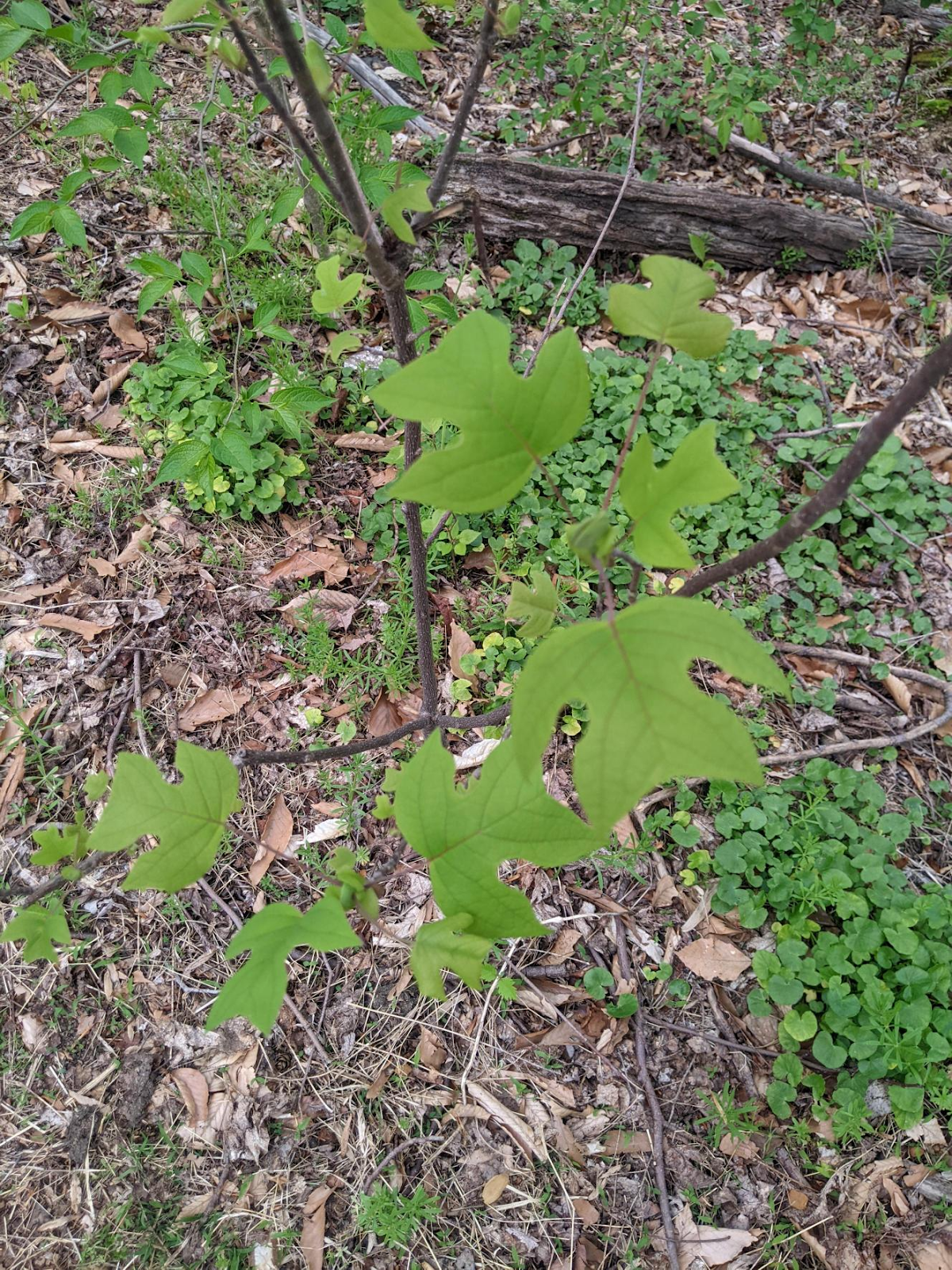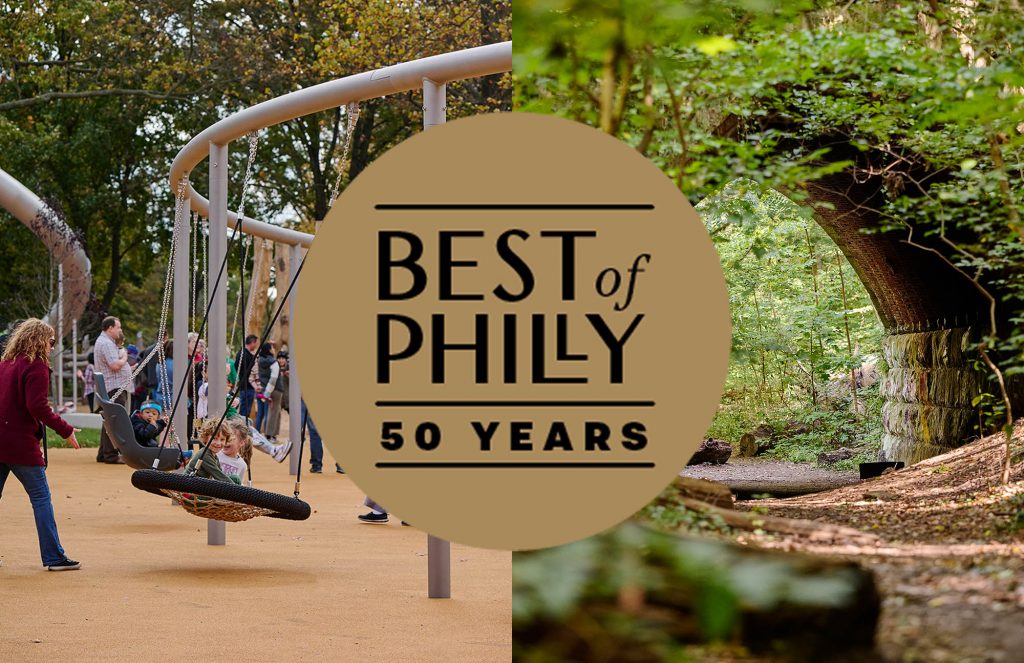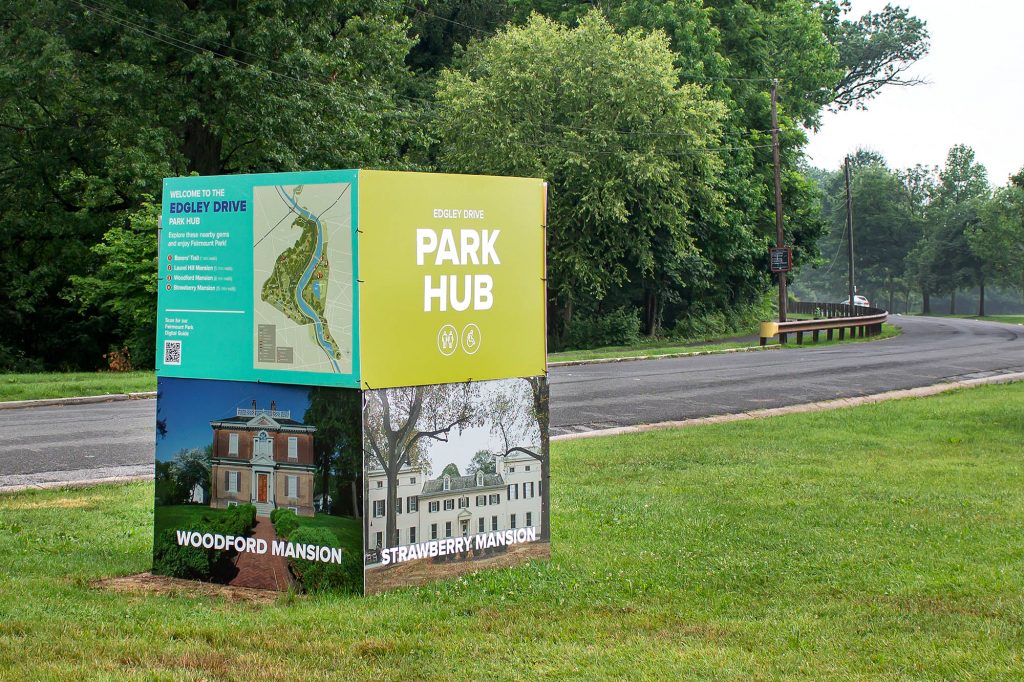Welcome the arrival of spring by getting outside and contributing to the 9th annual City Nature Challenge! This friendly competition runs from Friday, April 26–Monday, April 29. This worldwide event encourages community scientists of all ages and educational backgrounds to observe and submit pictures of wild plants, animals, and fungi using the free mobile app iNaturalist.
With miles of trails and open spaces, we encourage you to explore Fairmount Park’s diverse habitats during the Challenge and contribute to our 2024 iNaturalist Project Page. The person who submits the most observations on our project page will win some FREE Philly park swag! (Observations must be made in East or West Fairmount Park during the date range listed above.)
Read on for more information on how you can participate and contribute to the City Nature Challenge.
What is the City Nature Challenge?
The City Nature Challenge is an international effort for people to find and document plants and wildlife in cities around the world. Cities compete and collaborate to see who can make the most nature observations, who can find the most species, and who can engage the most people. Check out how Philly stacked up against other cities in 2023!
Why should I participate?
There is nature all around us, even in the city! Knowing what species are in our city and where they are helps us study and protect them, and the only way to do that is by all of us – scientists, land managers, and the community – working together to find and document nature in Philadelphia. By participating in the City Nature Challenge, not only do you learn more about your local flora and fauna, but you can also make your city a better place – for you and other species! PLUS: Free park swag! The person who submits the most observations on our project page* will win some Philly park gear! (*Observations must be made in East or West Fairmount Park during the date range listed above.)
How do I participate?
- Download the iNaturalist app onto your smartphone.
- Find any wild thing. It can be any wild plant, animal, fungi, or any other evidence of life (fur, tracks, shells, scat, etc.) found in Philly – including your own backyard!
- Take pictures or video of what you find using the iNaturalist app.
- Learn more as your observations get identified.
- Contribute to Fairmount Park Conservancy’s Project Page.
- To contribute to our project page, all you have to do is snap a photo in East or West Fairmount Park during the timeframe listed above. It will automatically be added to our project!
Please note – it’s okay if you don’t know the species! All you have to do is snap a photo and upload it – a professional will help you identify your observation through the app.
Where can I find wildlife in Fairmount Park?
There are so many spots to document wildlife in the city’s largest park. Our top 4 recommendations include:
Lansdowne Glen: This is a short and sweet trail that loops around the Lansdowne Creek on the grounds of the Fairmount Park Horticulture Center in West Fairmount Park. Featuring slightly rolling hills, you’ll meander through the recently restored forest and likely spot a variety of birds and other wildlife along the way. The iconic Pavilion in the Trees treehouse makes for a great birding spot.
Trolley Trail: The 4.5-mile Trolley Trail travels the route of the former Fairmount Park Trolley line that operated through Fairmount Park from 1896 to 1946. As you make your way along the trail, you’ll encounter plenty of plants, trees, and animals.
Concourse Lake: Concourse Lake in West Fairmount Park is a 14-acre Philadelphia Native Plant Park that features 142 native trees of 24 various species and 503 shrubs of 24 different species. It is a top birding spot in the park!
Boxers’ Trail: The Boxers’ Trail is a 3.8-mile trail with wooded and paved paths that winds through East Fairmount Park, along Randolph Creek. You’re bound to see lots of birds along the way!
Consult our Fairmount Park Digital Guide for trail maps and more information on these locations.
For more information, please visit Philly’s official City Nature Challenge website.
Be sure to follow along on social media:
#CityNatureChallenge
Instagram: @CityNaturePhilly
Facebook: @PhillyCNC
Twitter: @PhillyCNC
Need help with where to start? See if you can find these plants and trees that are starting to bud and bloom along the trails in East and West Fairmount Park.
Skunk cabbage: Skunk cabbage grows in wet areas and is named for the strong smell that it produces. It is one of the first plants to emerge after winter because it actually has the ability to produce heat, melting any snow that may be around it.

Mayapples: The leaves of the mayapple are just starting to unfurl. This native plant emerges in early spring and by May, its signature white flower and green “apple” will start to emerge underneath its leaves – hence its name.

Wineberry: The wineberry is a non-native shrub that has a red spiky stem and leaves that are silver on the underside. It has long 6’ tall shoots that can re-root at the tips when they touch the ground, allowing dense thickets to form and crowd out native plants/shrubs.

Garlic mustard: Garlic mustard is a non-native plant. It emerges earlier than many native plants and can really take over forested areas, blocking sunlight for native plants that emerge later in the season. It is about 2–3’ tall with small white flowers.

Tulip poplar: Tulip poplar trees are related to magnolias and tend to grow super straight and tall. This time of year, their leaves are starting to come in and some say they resemble the face of a cat. Towards the end of April, the tree’s pretty yellowish orange flower will start to bloom.

Redbud: Redbuds are small trees that provide a pop of color at the start of spring. The native tree has heart-shaped leaves and in early spring, its branches start to fill up with clusters of small pink flowers that bees and other pollinators rely on.




